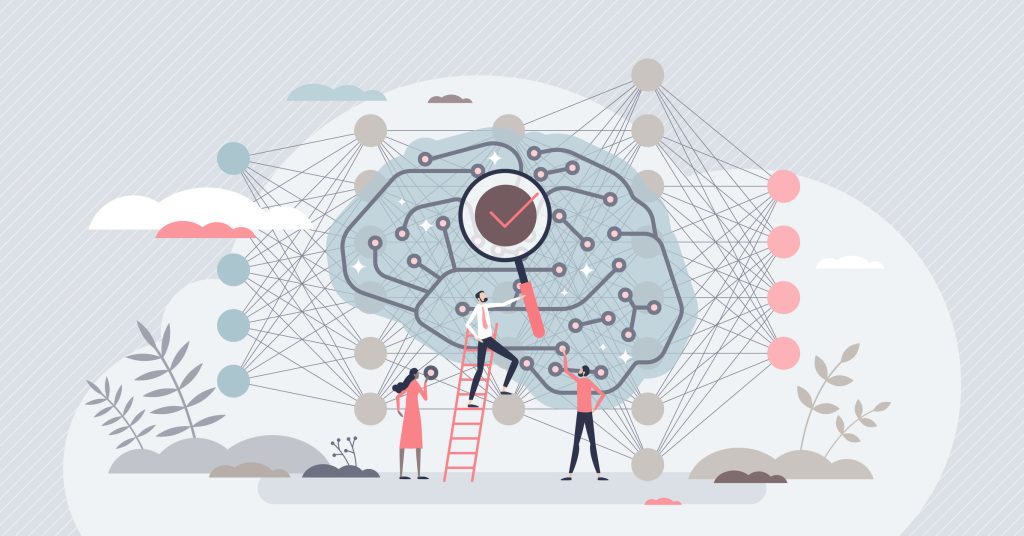Deep Learning: Teaching Computers to Learn Like Humans

Deep Learning
Deep learning is a subfield of machine learning that aims to replicate the way humans learn and make decisions. Unlike traditional machine learning algorithms, deep learning models are inspired by the human brain’s neural networks. These models consist of layers of interconnected nodes, known as neurons, which process information hierarchically.
The core idea is to teach computers to automatically extract and learn relevant features from data, rather than relying on manual feature engineering. Deep learning algorithms are particularly effective in tasks involving large amounts of data, such as image and speech recognition, natural language processing, and autonomous decision-making.
1. Neural Networks: The Building Blocks of Deep Learning
Neural networks are the foundational building blocks of deep learning. They are composed of layers of interconnected neurons, each performing simple mathematical operations. Neural networks can have multiple hidden layers, allowing them to capture complex patterns and representations from data.
The input data is passed through the network, and during training, the model adjusts the connections (weights) between neurons to minimize the error between predicted and actual outcomes. This process, known as backpropagation, enables neural networks to learn from data and improve their performance over time.
2. Deep Learning Algorithms: Unleashing the Power of Artificial Intelligence
Deep learning encompasses a variety of algorithms, each designed for specific tasks. Convolutional Neural Networks (CNNs) excel in image and video analysis, while Recurrent Neural Networks (RNNs) are well-suited for sequential data like text and speech. Other architectures, such as Generative Adversarial Networks (GANs) and Transformers, have also made significant contributions to the field.
These algorithms have fueled advancements in computer vision, natural language understanding, and generative modeling, making them essential tools in the development of artificial intelligence systems.
3. Training Deep Neural Networks: From Data to Intelligence
Training deep neural networks involves feeding them with labeled data to learn from examples. During training, the model optimizes its parameters using optimization techniques like gradient descent to minimize prediction errors. The availability of vast datasets and powerful hardware, such as GPUs, has been crucial in the success of deep learning.
The training process requires careful tuning of hyperparameters, data preprocessing, and regularization techniques to prevent overfitting. Once trained, deep neural networks can make predictions on new, unseen data, making them valuable for a wide range of applications.
4. Applications of Deep Learning: Transforming Industries
Deep learning has transformed numerous industries by automating tasks that were once considered challenging for machines. In healthcare, it aids in medical image analysis and disease diagnosis. In finance, it powers fraud detection and algorithmic trading. Autonomous vehicles rely on deep learning for perception and decision-making. Natural language processing models understand and generate human language, improving chatbots and translation services.
These applications illustrate the transformative potential of deep learning across various domains.
5. Challenges and Ethical Considerations in Deep Learning
Despite its success, deep learning faces challenges, including the need for massive amounts of labeled data, the risk of bias in AI systems, and concerns regarding data privacy and security. Bias can result from biased training data or the model’s architecture itself, leading to discriminatory outcomes. Ethical considerations are crucial to ensure responsible AI development and deployment.
Addressing these challenges requires ongoing research, transparency, and the development of ethical guidelines for AI practitioners and policymakers.
6. Future Directions in Deep Learning: What Lies Ahead?
The future of deep learning holds exciting possibilities. Researchers are exploring areas like unsupervised and self-supervised learning, reinforcement learning, and explainable AI to make models more interpretable and trustworthy. Federated learning and edge AI aim to decentralize AI processing, improving privacy and efficiency. Quantum computing may also revolutionize deep learning by solving complex problems at unprecedented speeds.
The field is dynamic, and ongoing research continues to push the boundaries of what deep learning can achieve, promising even more innovation and impact in the years to come.





